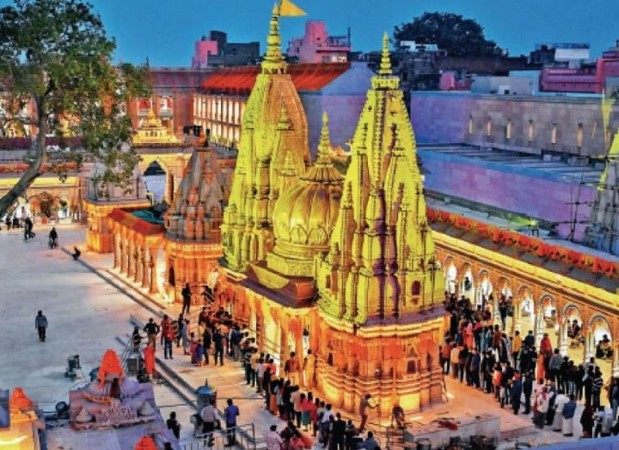
The history of the Kashi Vishwanath Temple, nestled in the ancient city of Varanasi, India, is a tale of resilience, destruction, and reconstruction spanning centuries. Revered as one of the twelve Jyotirlingas, or radiant sign of Lord Shiva, this temple has endured numerous tumultuous events throughout its existence, emerging each time as a symbol of unwavering faith and devotion.
The origins of the Kashi Vishwanath Temple trace back to antiquity, recognized as the primordial abode of Lord Shiva and Parvati. Referred to as Avimukteshwar, it finds mention in the Mahabharata and the Upanishads.
In the 11th century AD, King Harishchandra initiated the restoration of the temple, later completed by Emperor Vikramaditya.
However, in 1194 AD, the temple faced devastation at the hands of the invader Muhammad Ghori.
Despite local efforts to rebuild, Sultan Mahmud Shah of Jaunpur razed the temple once more in 1447 AD.
The temple was reconstructed yet again in 1585 AD with the support of Raja Todarmal, as chronicled in Dr. A.S. Bhatt's book "Dan Haravali."
In 1632 AD, Emperor Shah Jahan ordered a military campaign to dismantle the temple, resulting in the destruction of numerous surrounding shrines.
Subsequently, Emperor Aurangzeb issued a decree in 1669 AD for the demolition of the Kashi Vishwanath Temple, leading to the construction of a mosque on its site.
The forced conversion of the temple into a mosque was completed on September 2, 1669, as per Aurangzeb's orders.
Between 1752 and 1780 AD, Maratha leaders Dattaji Scindia and Malhar Rao Holkar made endeavors to liberate the temple.
In 1770 AD, Mahadji Scindia negotiated compensation from Mughal Emperor Shah Alam II for the destruction of the temple, but the project was halted due to the East India Company's control over Kashi.
The period of 1777-1780 AD witnessed the restoration of the temple by Queen Ahilyabai Holkar of Indore, with Maharaja Ranjit Singh of Punjab contributing a golden dome.
In 1809 AD, Hindus reclaimed the mosque forcibly constructed on the temple's site, known today as the Gyanvapi Mosque.
District Magistrate M. Watson attempted to hand over the Gyanvapi precinct to Hindus permanently in a letter dated December 30, 1810, but this was never realized.
Historical accounts from the 11th to the 15th centuries mention the temples and their destruction during various reigns. Notably, during the era of Muhammad Tughlaq, some temples were converted into mosques.
In modern times, the Kashi Vishwanath Temple underwent a transformative project under Prime Minister Narendra Modi's leadership, known as the Kashi Vishwanath Dham. With a budget exceeding 800 crores INR, the project aimed to enhance facilities for devotees and restore the temple's ancient glory. The temple complex, initially spanning 3,000 square feet, has expanded to over 5 lakh square feet. Additionally, over 300 buildings surrounding the temple were acquired and protected under the project.
In conclusion, the saga of the Kashi Vishwanath Temple encapsulates the indomitable spirit of Hindu devotion amidst adversity. Despite facing repeated destruction over the centuries, the temple stands as a testament to resilience, cultural heritage, and the enduring faith of millions. The ongoing reconstruction efforts symbolize a revival of sacred traditions and a reaffirmation of the temple's central role in the spiritual fabric of India.
Chandigarh University Chancellor Satnam Singh Sandhu Nominated to Rajya Sabha
These Athletes Embark on Foreign Training Journey Ahead of Paris Olympics
New Moto G24 Power Launches in India Today: Check Specs and Price